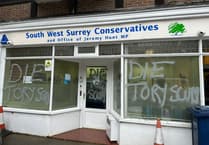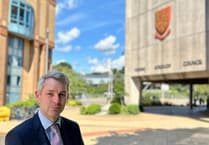THIS week, Peeps into the Past focuses mainly on hotels in Woking town centre – but that wasn’t the original idea.
Reader Mark Coxhead emailed me two old picture postcards from his collection, one showing an aerial view of the town, the other of Chertsey Road.
Mark said the aerial view, Picture 1,“threw him at first” because he thought it was looking down Commercial Road.
However, he then realised the building slightly off-centre to the right was the Red House Hotel, in Cherstey Road. It preceded the Red House pub that was built in the garden of the former hotel, and which today is called O’Neills.
The aerial view was probably taken from the building that was then the post office.
I have a postcard featuring the same photograph, but mine is in monochrome, while Mark’s card was artificially coloured in the printing process. My postcard was sent through the mail and is postmarked 30 September 1903, making it a fairly early example from the start of the “Golden Age” of Edwardian postcards.
It is also one of the first postcards with what is known as a divided back, that is the left-hand portion for the message and the right-hand portion for the address. Previously, the whole of the back of picture postcards were given to write the address of the recipient and a small space beneath the picture on the front to write a message.
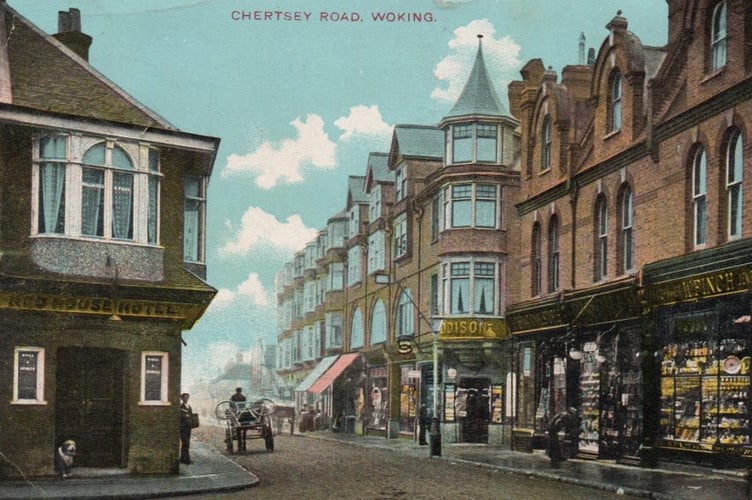
Mark’s other postcard, Picture 2, looks down Chertsey Road and shows the Red House Hotel on the left. Note the dog sitting in the doorway.
Both of Mark’s cards were published by George Addison who was a newsagent in Chertsey Road. His shop can be seen on the right, on the ground floor of the building that has a turret. The building still stands today.
I thought it a good idea to take a peek at some more of Woking’s old hotels and another view of Chertsey Road on a 1900s postcard – Picture 3 – printed on photographic paper. It is from my collection and is full of detail. Note the large sign for the London and South Western Bank.
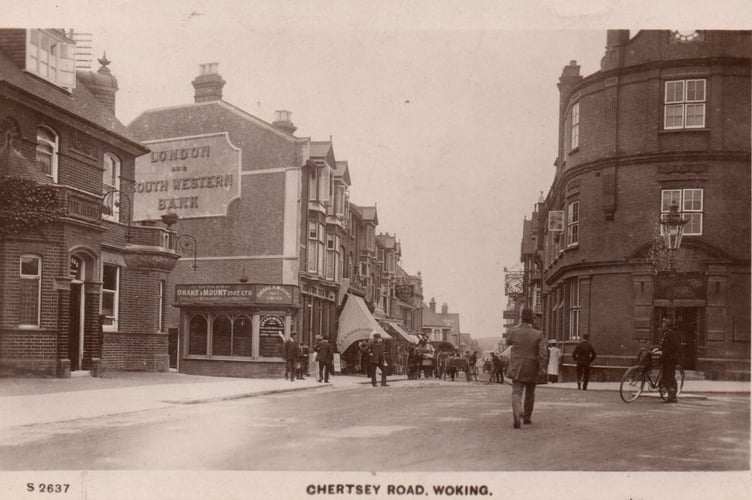
Next to the bank is the Albion Hotel. The Albion had a commanding position opposite the town entrance to the railway station and presumably did a brisk trade from people alighting at the station looking for a place to stay.
The first Albion Hotel on the site was built in the late 1850s. It was pulled down in the 1890s and the building seen here replaced it. It too is now long gone, having been demolished when the town centre was rebuilt in the 1960s. It was replaced with a building called Albion House.
A postcard showing Guildford Road – Picture 4 – gives a glimpse of The Railway Hotel seen on the far right. There is a sign for the hotel on the patch of grass to the left. It notes the proprietor as a J Tigue.
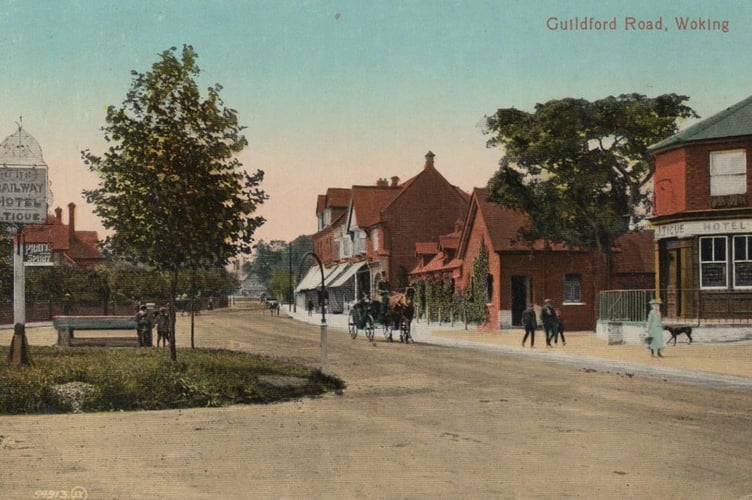
Despite there not being a motor-vehicle in sight, an enamel sign for Pratt’s Motor Spirit has been attached to the wooden post of the hotel sign. And a group of boys are hanging around a drinking fountain on the side of a water trough for animals. It may have been one of those supplied by The Metropolitan Drinking Fountain and Cattle Trough Association, a society that was inaugurated in 1859.
The Railway Hotel was built in 1840 and was the second building, after the railway station, to be built on Woking Common. It has been named The Sovereigns for many years.
If you have some memories or old pictures relating to the Woking area, call me, David Rose, on 01483 838960, or drop a line to the News & Mail.
David Rose is a local historian and writer who specialises in what he calls “the history within living memory” of people, places and events in the west Surrey area covering towns such as Woking and Guildford. He collects old photos and memorabilia relating to the area and the subject, and regularly gives illustrated local history talks to groups and societies. For enquiries and bookings please phone or email him at: [email protected]

